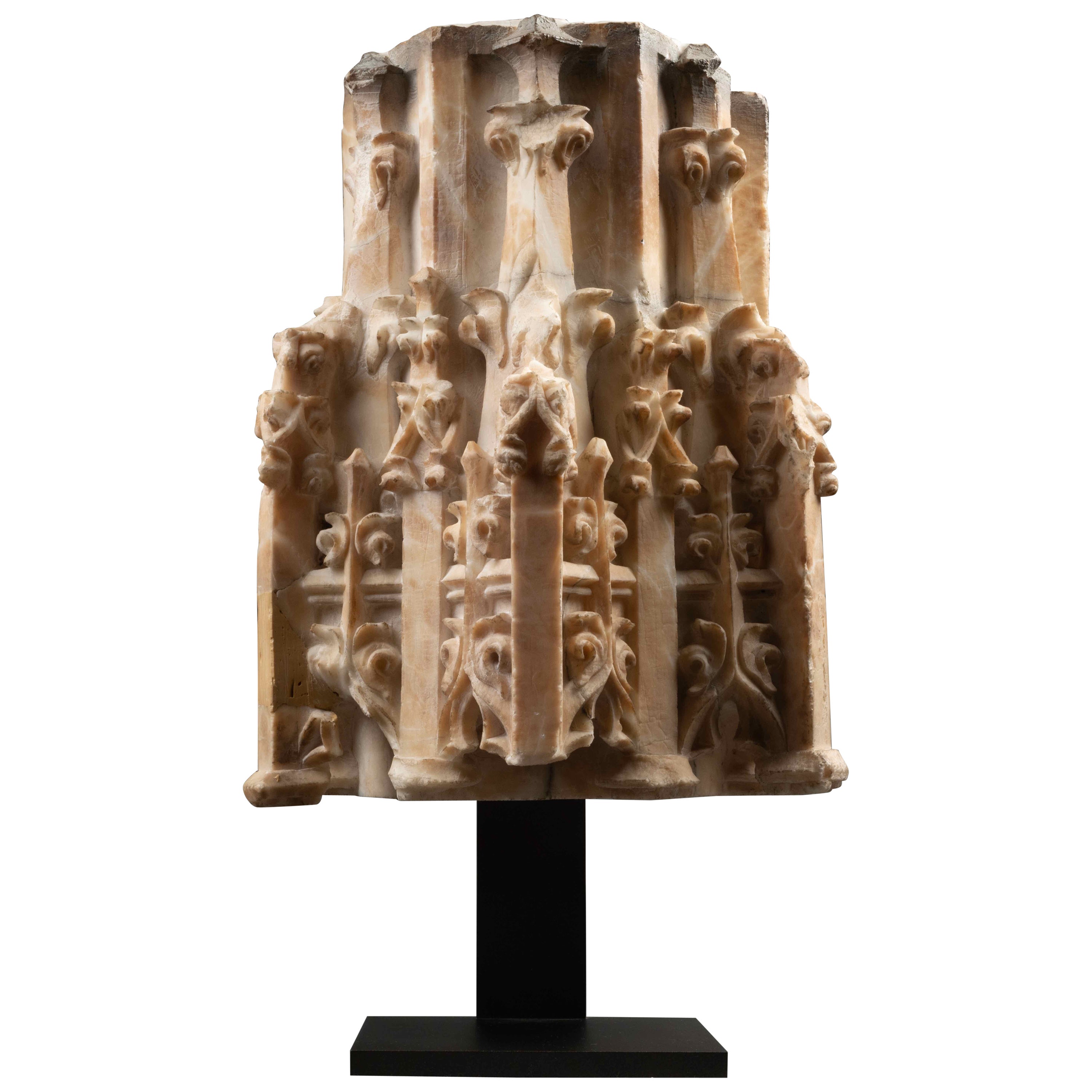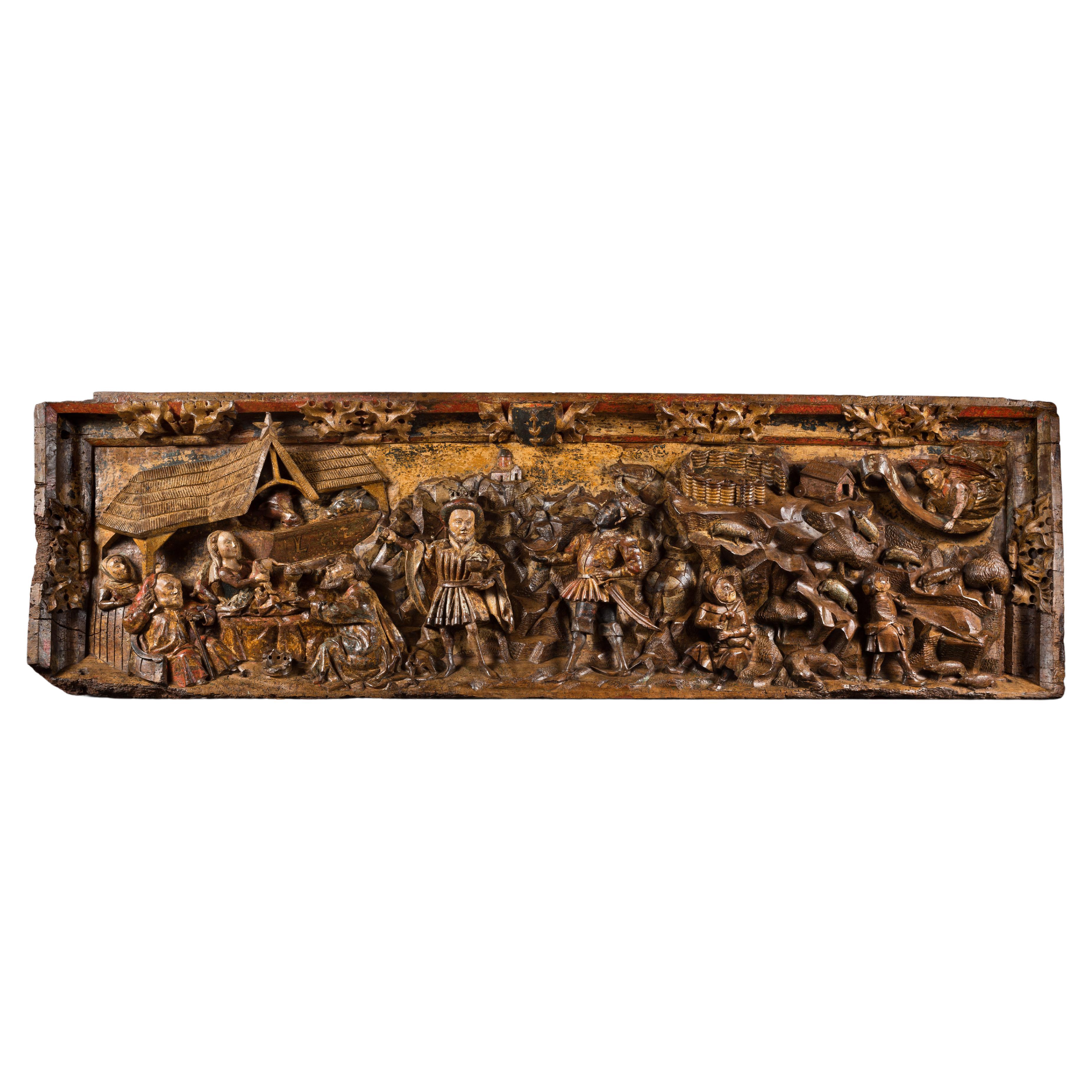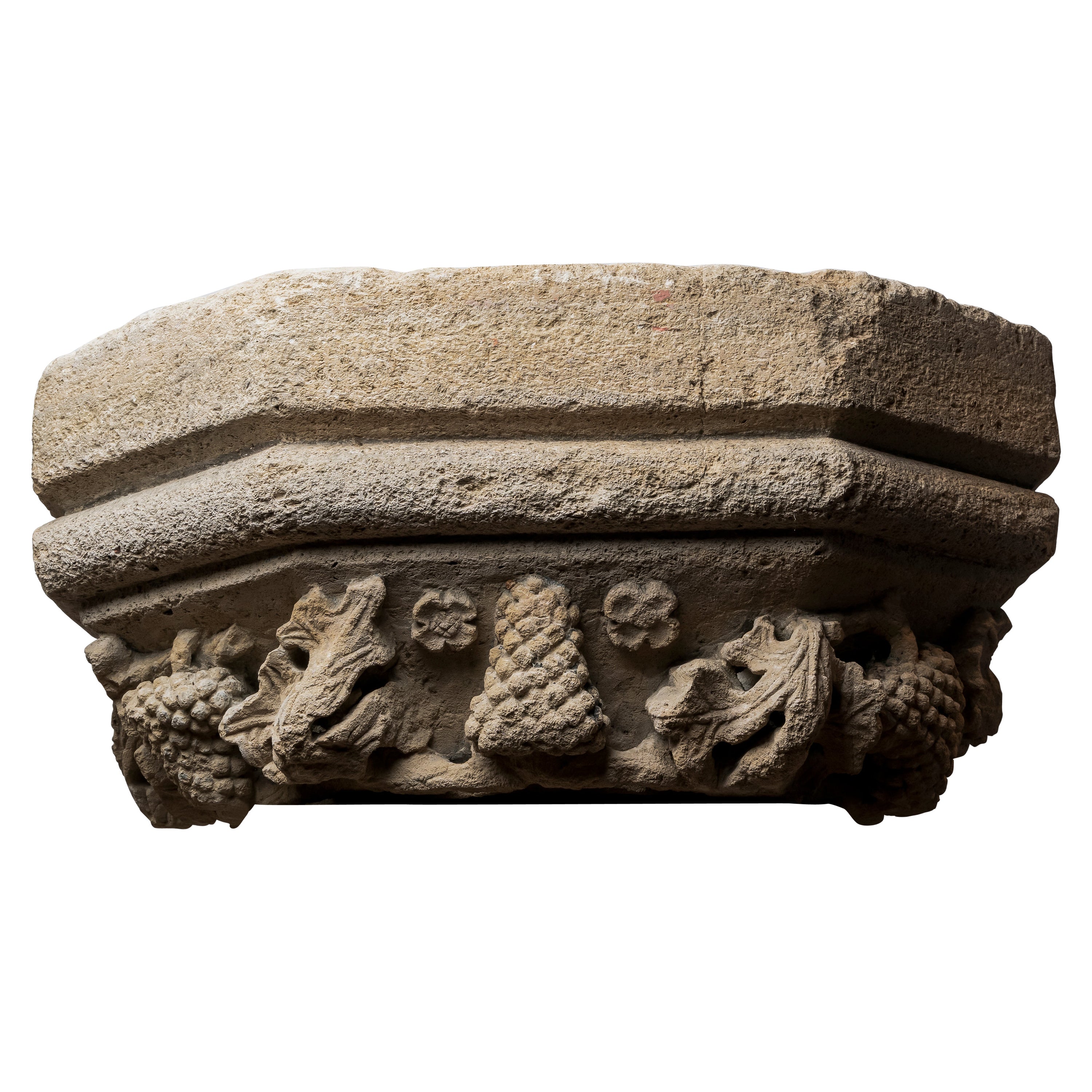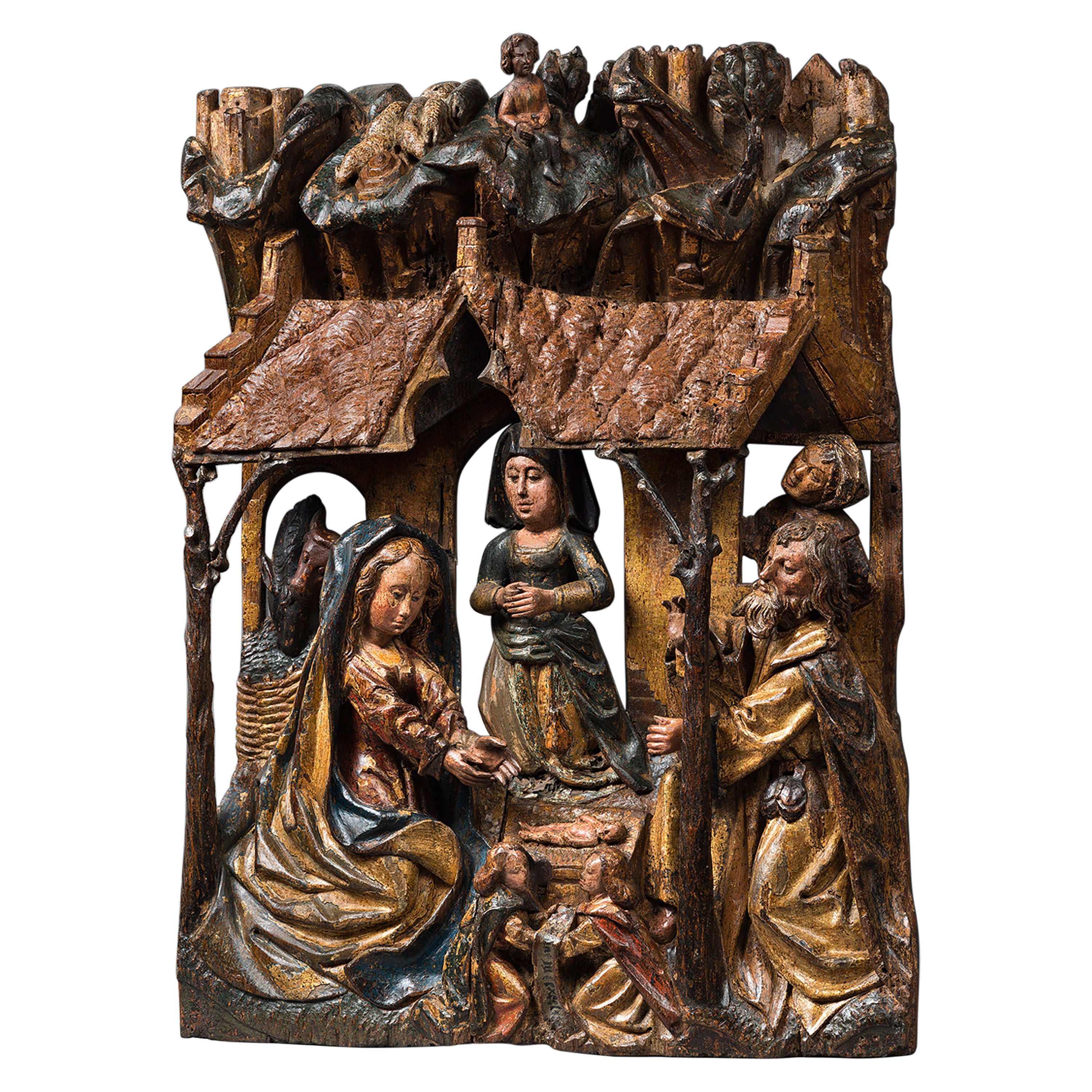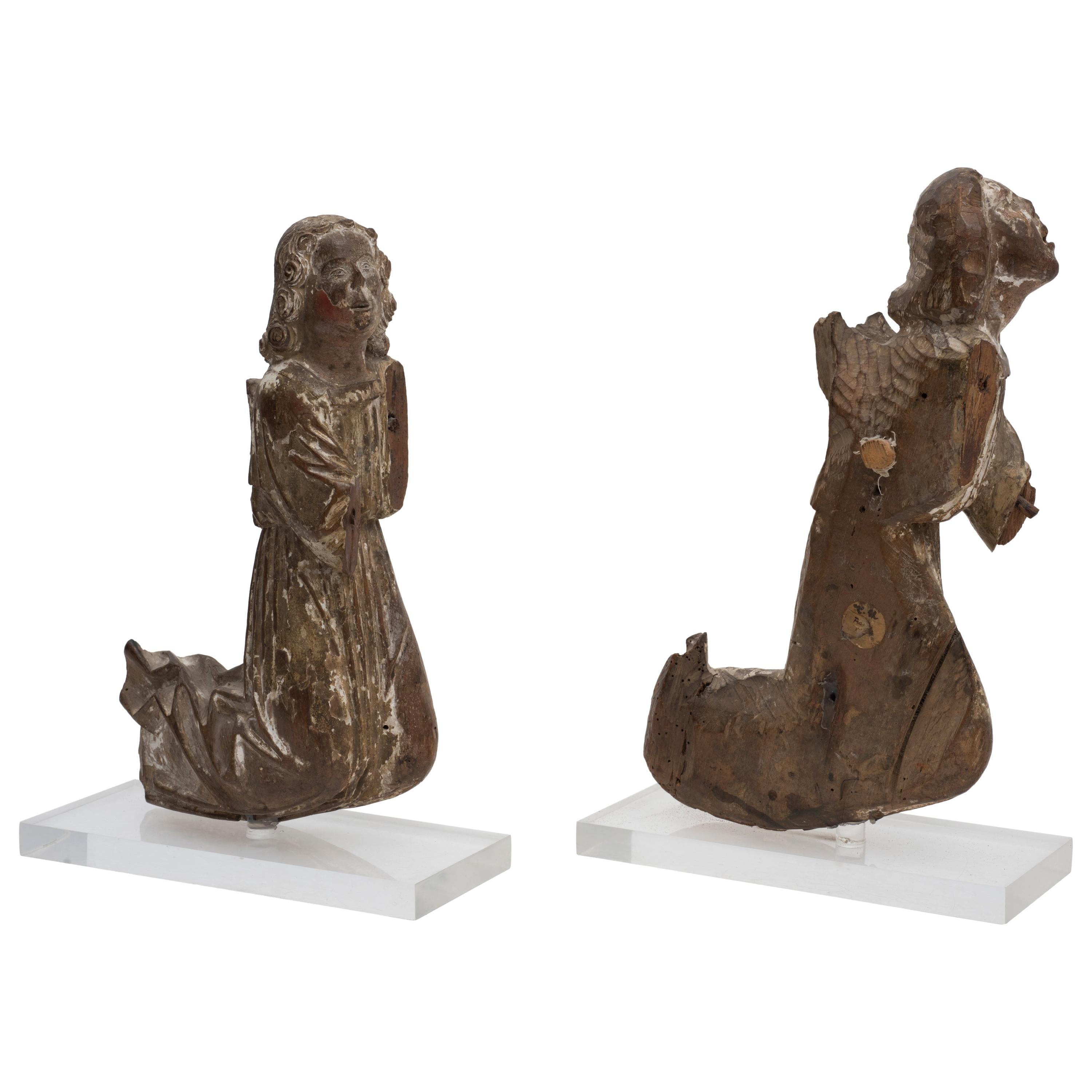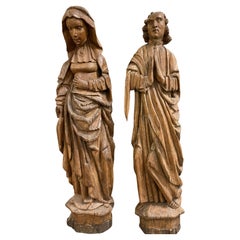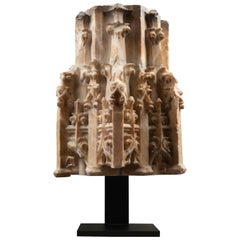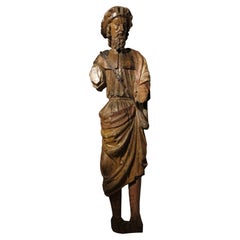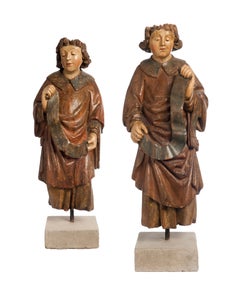
Flemish Pair of Angles 15th Century
View Similar Items
1 of 10
Flemish Pair of Angles 15th Century
About the Item
- Dimensions:Height: 33.47 in (85 cm)Width: 1,190.95 in (3,025 cm)Depth: 9.85 in (25 cm)
- Sold As:Set of 2
- Style:Gothic (Of the Period)
- Materials and Techniques:
- Place of Origin:
- Period:
- Date of Manufacture:15th century
- Condition:Wear consistent with age and use. Minor losses.
- Seller Location:Sint Annaland, NL
- Reference Number:1stDibs: LU10114991862
You May Also Like
- Pair of 15th/16th Century Carved Oak SaintsLocated in Maidstone, GBA Pair of Late 15th or Early 16th Century Oak Saints carved in high relief and raised on polygonal bases. The female depicted standing in contrapose with low...Category
Antique 15th Century and Earlier European Gothic Figurative Sculptures
MaterialsOak
$7,664 Sale Price / set40% Off - Gothic Canopy, France, 15th CenturyLocated in Bruxelles, BEGothic canopy France, 15th century Alabaster, some traces of polychromy 33 x 23 x 20 cm Provenance: - Private collection Genève, Switzerland ...Category
Antique 15th Century and Earlier French Gothic Figurative Sculptures
MaterialsAlabaster
- 15th Century Carved Wood Depicting Saint JamesLocated in Saint-Ouen, FRThe Saint depicted here is Saint James the Great. James is the brother of St. John the Evangelist. Nothing is known of his activities after the Ascension...Category
Antique 15th Century and Earlier French Gothic Figurative Sculptures
MaterialsOak
- 15th Century Burgundian Low-Relief Depicting Scenes of the NativityLocated in Saint-Ouen, FRProvenance : In the same private collection for several generations, Burgundy. The canonical Gospels describe briefly the episode of the Nativity. It comprises three parts : • The Preludes : the Journey to Bethlehem, the Census • The Nativity • The Announce to the Shepherds and the Adoration of the Magi Only the Gospel according to Matthew (2, 1-12) speaks about the Adoration of the Magi. Staying vague about their number it does say they brought the newborn gold, incense and myrrh. The apocryphals, the fathers of the Church and many other authors have filled in the gaps of the evangelic tale. The sobriety and symbolic of the story have been a huge inspiration to artists. Although one of the oldest depictions of the Adoration of the Magi dates from the 2nd century the theme became very popular in Christian art during the late 14th century. One of the reasons explaining this success is that it celebrates both the Virgin and Christ at the same time. This important walnut panel is carved in a strong relief and depicts the different steps of the story of Jesus’ birth. On the left, the donkey and ox that have accompanied Mary and Joseph from Bethlehem are depicted behind a trough. On the thatch roof appears the star that would guide the magi to the place of birth of Jesus. Mary is wearing a veil and is seating on a bed. She holds her baby at arm’s length to present him to the magi. Saint Joseph is by her side. The old man is holding a cane in his left hand while from the right hand he seems to uncover himself to greet the visitors. A woman assists to the scene. In front of the holy family the three magi stand behind one another to pay their homage to the newborn. The first magi has a pointed beard. He is already kneeling out of deference and has placed his crown to his feet. He gives the baby a hanap filled with gold coins. This is Melchior as the legend describes him with white hair and a long beard. Caspar, the second magi bears a cup of incense. He is looking at the third magi and with his right hand he points to the star that has guided them there. He has a short beard and wears crakow shoes, breeches and a wide sleeved doublet. Finally Balthazar, the elegant last magi proceeds proudly towards the holy family with his one hand on the saber’s hilt and the other holding a cup. He brings the divine child the myrrh. He probably just dismounted as the horse can be seen behind him. The scene is set in a very detailed and narrative decor. In the right part of the panel the shepherd receive the announce of Jesus’ birth. An angel comes down from heaven with a scroll bearing the good news in his hands. The herding dog sleeps peacefully while sheeps graze. At the top of the cliff we notice the gilded sheeps enclosure. The panel’s moulded frame is carved with a foliated decor. In it’s centre appears a coat-of-arms. It is the alliance of the three magi’s arms. Indeed as it was common for legendary figures the three of them received imaginaries coat-of-arms. Thus, on a field of azure stands a star for Melchior, a crescent for Caspar and a pennon for Balthazar. This high-relief panel is undeniably the work of a very skilled and imaginative artist. This key moment in the New Testament is transposed to a contemporary environment thanks to the figures’ clothing and the rural daily life scene. This way the universal dimension of the episode is highlighted allowing a better understanding for the contemporaries. The sculptor has represented the episodes of the Adoration of the Magi and the Announce to the Shepherd with great talent and numerous details giving life to a picturesque and narrative scene. The important traces of polychromy give those already very animated scenes a stronger pictorial power and a rich dynamism. Because of the picturesque and familiar realism so dear to the artists of the late Medieval era, of the didactic function of this type of panel as well as the quality of the sculpture this piece is an astounding example of Burgundian art of the 15th century. Literature Louis Réau, Iconographie de l’Art chrétien...Category
Antique 15th Century and Earlier French Gothic Figurative Sculptures
MaterialsWalnut
- San Antonio Abad, Spanish School of the 15th Century '1440-1501'By Europa AntiquesLocated in Madrid, ESSan Antonio Abad, Castilian school of the 15th century (1440-1501) Carving in polychrome wood, measures: 45 x 15 cm good vintage conditions.Category
Antique 15th Century and Earlier Spanish Gothic Figurative Sculptures
MaterialsWood
$3,254 Sale Price20% Off - Large Hexagonale Base of Pilaster in Burgundy Stone, Burgundy, 15th CenturyLocated in Bruxelles, BELarge base of molded hexagonal pilaster in burgundy stone carved with vines, grapes and rosettes in high relief. Burgundy, 15th century 28 x 63 x 30 cm Provenance : collection De...Category
Antique 15th Century and Earlier French Gothic Architectural Elements
MaterialsStone
$5,717 Sale Price20% Off

